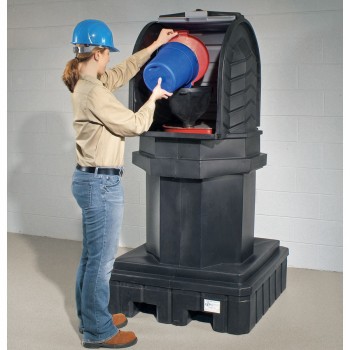waste

Liquid and material that is removed from the tank(s) is considered a hazardous waste by the EPA. The liquid consists mostly of water however it has come into contact with fuel (petroleum). Petroleum Contact Water (PCW) is one term that has emerged as a description. Two departments have been working together regarding the waste. The Environmental Protection Agency (EPA) is the governming body regarding the waste and the Department of Transportation (DOT) regulates any transportation of that waste.
There are several Ohio EPA policies released by the Department of Materials and Waste Management. You are most likely considered a CESQG - Conditionally Exempt Small Quantity Generator. North Coast Tank can discuss these policy guidance documents with you.
 Site accumulation is defined in Ohio Administrative Code (OAC) rule 3745-52-34(C). It is intended to be used as guidance by hazardous waste generators and inspectors to improve their understanding and compliance with the satellite accumulation requirements. The major concepts addressed in the policy are:
Site accumulation is defined in Ohio Administrative Code (OAC) rule 3745-52-34(C). It is intended to be used as guidance by hazardous waste generators and inspectors to improve their understanding and compliance with the satellite accumulation requirements. The major concepts addressed in the policy are: